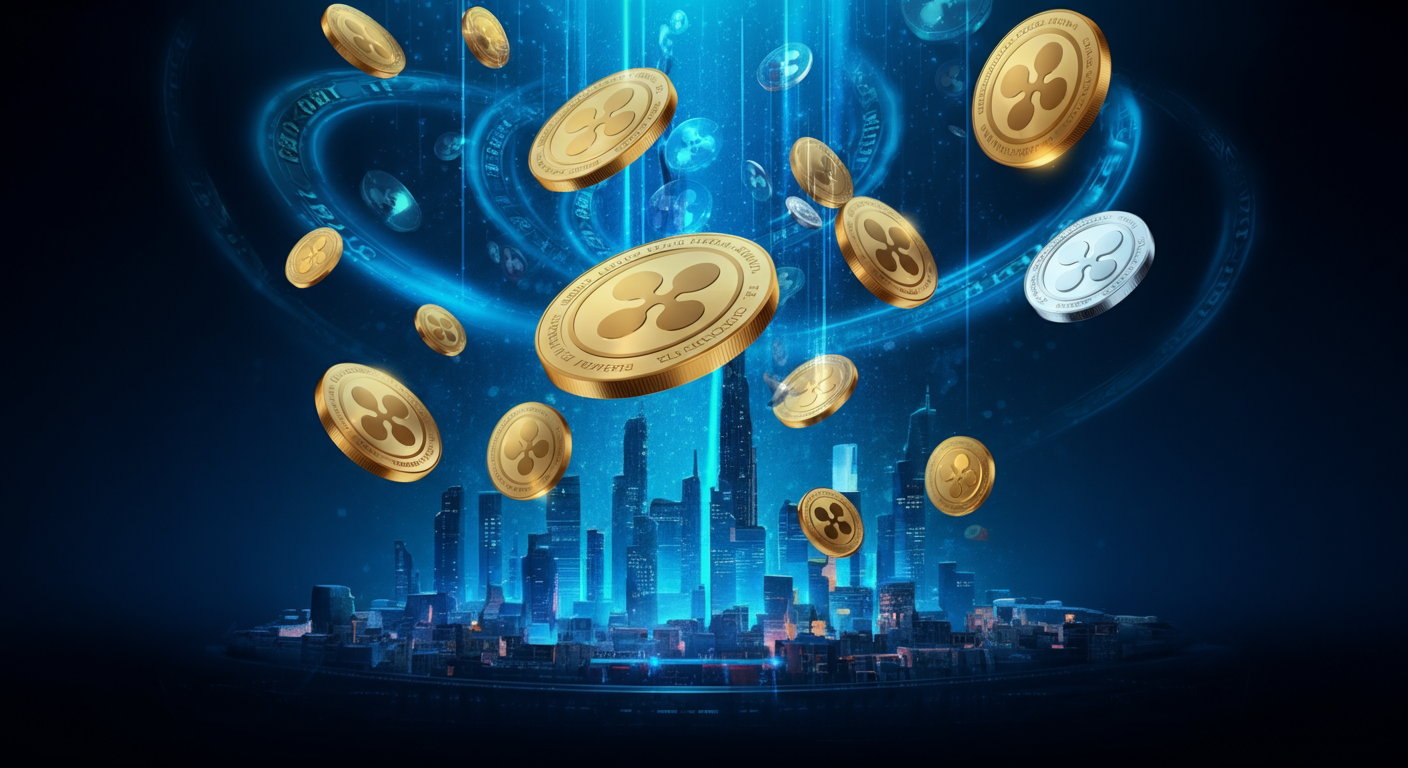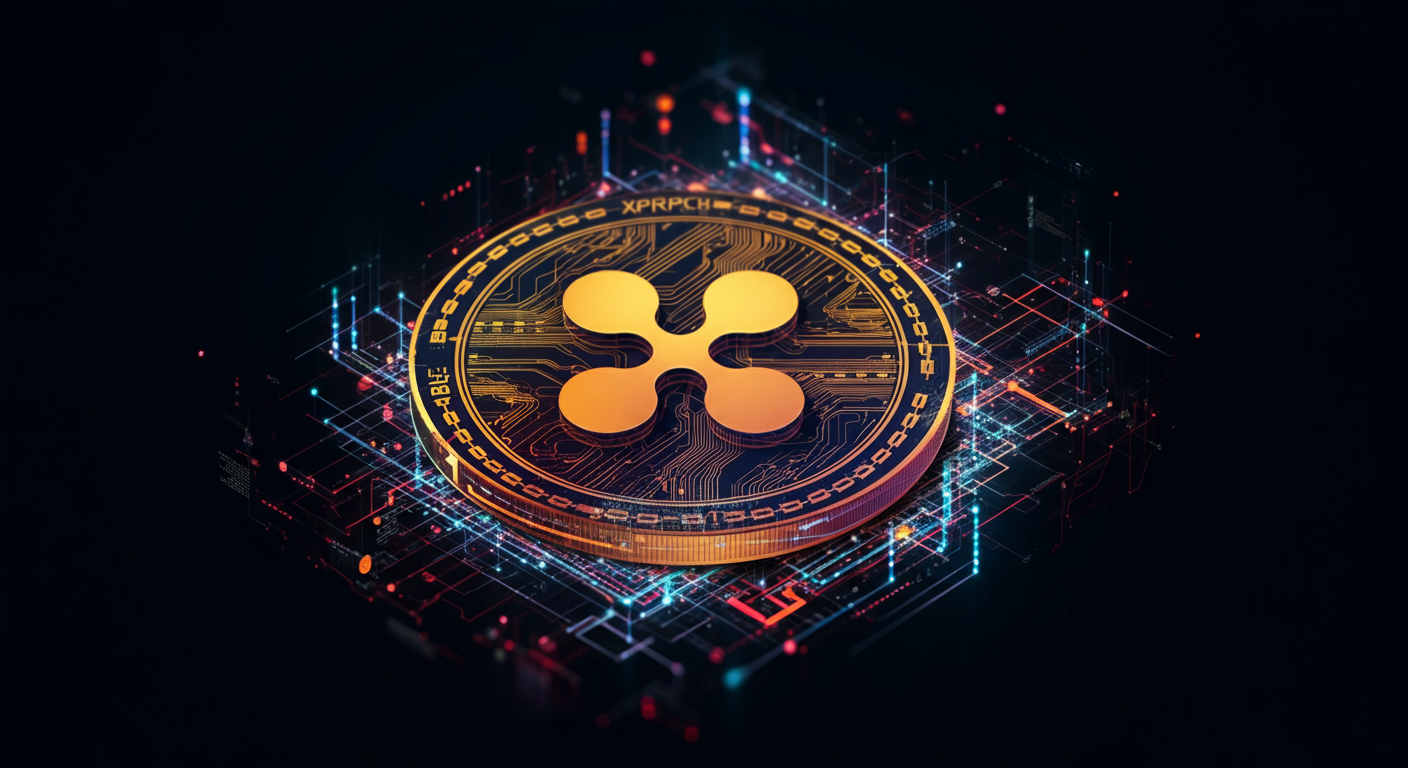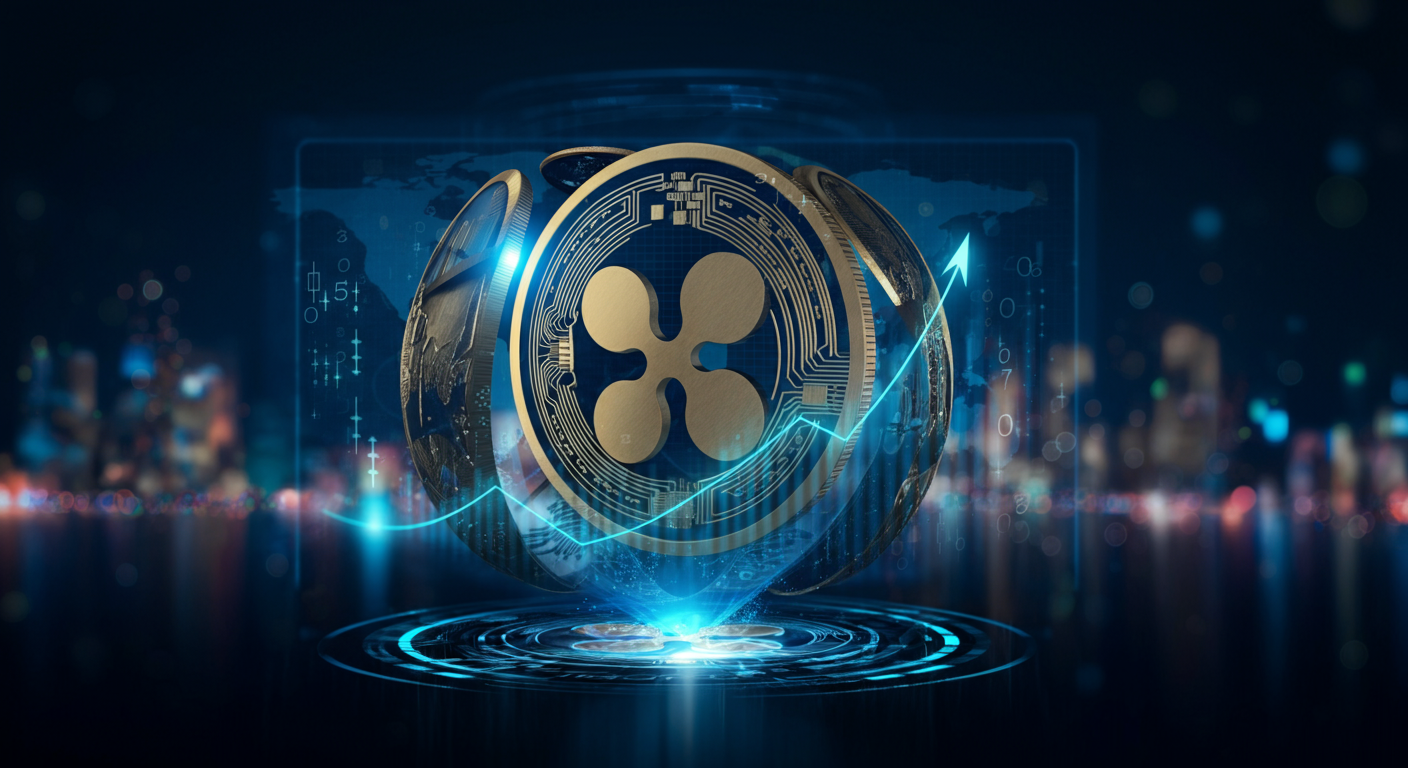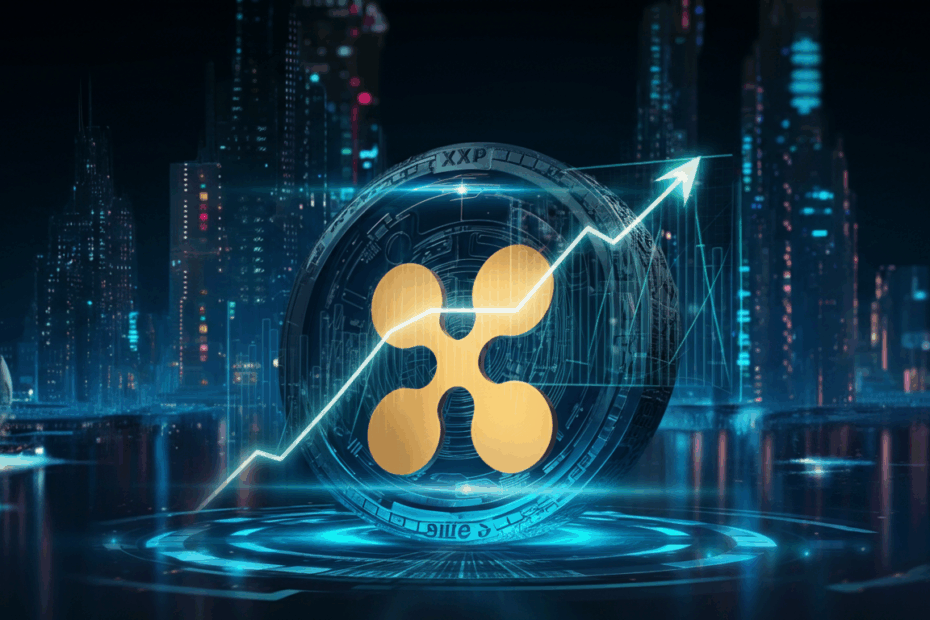Quick Guide Video
First, watch this 120-second explainer video to get a quick overview of XRP Explained: A Beginner’s Guide to Ripple’s Crypto. After that, the article will dive deeper into the details.
Want fast, low-cost global payments? 🤔 Dive into XRP! Learn about Ripple’s crypto, tech, and real-world uses. #XRP #crypto #blockchain#XRP #cryptocurrency #blockchain
🎧 Listen to the Audio
If you’re short on time, check out the key points in this audio version.
📝 Read the Full Text
If you prefer to read at your own pace, here’s the full explanation below.
Basic Info
John: Hey Lila, today we’re diving into XRP, which is the native cryptocurrency of the XRP Ledger. It’s designed mainly for fast and efficient cross-border payments, kind of like a super quick way to send money across the world without the usual hassles of traditional banking.
Lila: That sounds useful! So, what’s the backstory? I’ve heard it’s connected to Ripple, right?
John: Absolutely. In the past, XRP was created in 2012 by Ripple Labs, with founders like Jed McCaleb and Chris Larsen. It started as a way to improve upon Bitcoin’s limitations, focusing on speed and cost for international transfers. There were some legal battles, like the SEC lawsuit that began in 2020, which accused Ripple of selling unregistered securities, but it was a big deal in the crypto world.
Lila: Wow, that must have been intense. As of now, what’s happening with XRP? Why are people buzzing about it on X?
John: As of now, XRP is seeing a lot of attention due to its recent price surges and integrations. From what I’ve seen on X, posts from Ripple highlight things like the Q4 2024 Markets Report showing a 280% price movement amid fading regulatory uncertainty. It’s trading around $3.11 USD, according to real-time data from sources like CoinMarketCap, and there’s excitement about its role in payments.
Lila: That’s exciting! Looking ahead, what might be next for XRP?
John: Looking ahead, with regulatory shifts in the U.S. and ongoing developments like stablecoin integrations, XRP could expand into more financial services. Ripple’s reports on X suggest advancements in tokenization and broader adoption in places like Singapore.

Core Technology / Features
Lila: John, can you break down the tech behind XRP? I’m not super technical, but I want to understand the basics.
John: Sure thing, Lila. The foundation is the XRP Ledger, an open-source blockchain that’s decentralized and designed for high-speed transactions. Unlike Bitcoin’s proof-of-work, it uses a consensus protocol called Ripple Protocol Consensus Algorithm, which is like a group of trusted validators agreeing on transactions quickly, without needing massive energy.
Lila: That makes sense—kind of like a quick vote among friends instead of a long debate. What about scalability?
John: Exactly! In the past, XRP was built to handle up to 1,500 transactions per second, way faster than Bitcoin’s 7 or so. It solved early scalability issues by not relying on mining, which avoided congestion problems seen in other chains.
Lila: Cool. As of now, how does it perform?
John: As of now, it’s even more efficient with updates like XLS-20 for NFTs, as mentioned in Ripple’s X posts about technical developments. It can process payments in 3-5 seconds with tiny fees, making it ideal for real-time global transfers.
Lila: And special features? Anything unique?
John: One special feature is its built-in decentralized exchange (DEX), where you can trade assets directly on the ledger. Think of it like a marketplace inside the blockchain. Looking ahead, integrations like the EVM sidechain could bring more compatibility with Ethereum apps, expanding its features.
Tokenomics / Supply Model
Lila: Tokenomics sounds fancy—what does that mean for XRP?
John: It’s just how the token’s economy works, Lila. In the past, XRP launched with a total supply of 100 billion tokens, all pre-mined. Ripple escrowed 55 billion to release them gradually, preventing dumps and ensuring stability.
Lila: Pre-mined? Like, they were all created at once?
John: Yep, no ongoing mining. As of now, the circulating supply is around 56 billion, with small amounts burned per transaction to prevent spam—it’s like a tiny fee that gets destroyed, helping control inflation.
Lila: No staking? How do people earn?
John: XRP doesn’t have traditional staking, but there are ways like providing liquidity. Looking ahead, with plans for more DeFi integrations, we might see new models, but the focus remains on utility over speculative rewards.

Use Cases & Ecosystem
Lila: What can you actually do with XRP in the real world?
John: Great question. In the past, it was mainly for cross-border payments via Ripple’s On-Demand Liquidity (ODL), helping banks settle transfers instantly without pre-funding accounts.
Lila: Like sending money abroad without waiting days?
John: Precisely. As of now, it’s expanded into DeFi and NFTs on the XRPL, with partnerships like Bitso for stablecoins. From X trends, there’s talk of tokenization in Singapore for real-world assets.
Lila: Any business uses?
John: Yes, companies use it for efficient infrastructure. Looking ahead, with acquisitions like Hidden Road for $1.25B, as per Ripple’s Q1 2025 report on X, it could scale into more enterprise solutions.
Developer Team & Community Engagement
Lila: Who’s behind XRP? Tell me about the team.
John: The core team is at Ripple Labs, with experienced folks like CEO Brad Garlinghouse. In the past, they focused on building the ledger and navigating regulations.
Lila: How active are they now?
John: As of now, they release quarterly markets reports, as seen in their X posts, with frequent updates on GitHub. Community engagement is high—Ripple’s X account shares insights, and there’s energy in groups like Reddit’s r/XRP.
Lila: What about the future?
John: Looking ahead, with ended lawsuits and new hires, expect more AMAs and community-driven developments.
Rewards & Incentives (if applicable)
Lila: Are there ways to earn rewards with XRP?
John: In the past, no direct staking, but now, through DeFi on XRPL, users can provide liquidity for yields. Looking ahead, stablecoin integrations like RLUSD might offer more incentives.
Competitor Comparison
- Compared to Bitcoin, which is more like digital gold, and Stellar (XLM), which also focuses on payments but with different governance.
John: XRP stands out for its speed—faster than Bitcoin’s slow confirmations—and lower fees than Stellar in some cases, plus its enterprise focus.
Lila: Why else?
John: Its consensus is energy-efficient, unlike Bitcoin’s mining, and it has strong regulatory progress, making it more appealing for banks than decentralized alternatives.
Risk Factors and Challenges
Lila: Every project has downsides—what about XRP?
John: In the past, the SEC lawsuit created uncertainty. As of now, centralization concerns persist since Ripple holds much supply. Looking ahead, regulatory changes or network attacks could pose risks, plus sustainability from validator reliance.
Industry Expert Insights
John: From X, an analyst paraphrased that XRP could follow Bitcoin’s path to new highs, based on community sentiment.
Lila: Another one?
John: Ripple’s Jack McDonald on X highlighted stablecoins like RLUSD driving $1T in value, showing expert optimism for payments.
X Community Buzz & Roadmap Updates
Lila: What’s the vibe on X right now?
John: Buzz is high with posts about price picks and analyst predictions. Roadmap includes tokenization and stablecoin growth, as per recent Ripple updates.

FAQ (minimum 6 questions)
What is XRP?
John: XRP is a digital asset for fast payments on the XRP Ledger.
Lila: Like quick money transfers?
How does XRP differ from Bitcoin?
John: It’s faster and cheaper, focused on payments, not store of value.
Lila: Got it, more practical for everyday use.
Is XRP decentralized?
John: Yes, but with validators; Ripple influences but doesn’t control it.
Lila: So, somewhat centralized?
Can I buy XRP?
John: Yes, on exchanges, but DYOR.
Lila: Always research first!
What are XRP’s fees like?
John: Very low, fractions of a cent per transaction.
Lila: That’s affordable!
What’s the future of XRP?
John: More adoptions in finance, but watch regulations.
Lila: Exciting possibilities!
How secure is XRP?
John: Strong consensus, no major hacks, but always use secure wallets.
Lila: Safety first!
Related Links
Final Reflections
John: After exploring XRP together, I can say it’s one of those projects that’s both interesting and approachable for newcomers.
John: It’s great to see how it blends innovation with a friendly, active community. I think it’s worth keeping an eye on!
Lila: Absolutely, John! I learned so much today. I love how blockchain projects like this can be explained without all the confusing jargon.
Lila: I’m looking forward to checking in on XRP in the future to see how it grows!
Disclaimer: This article is for informational purposes only. Please do your own research (DYOR) before making any investment or usage decisions.
